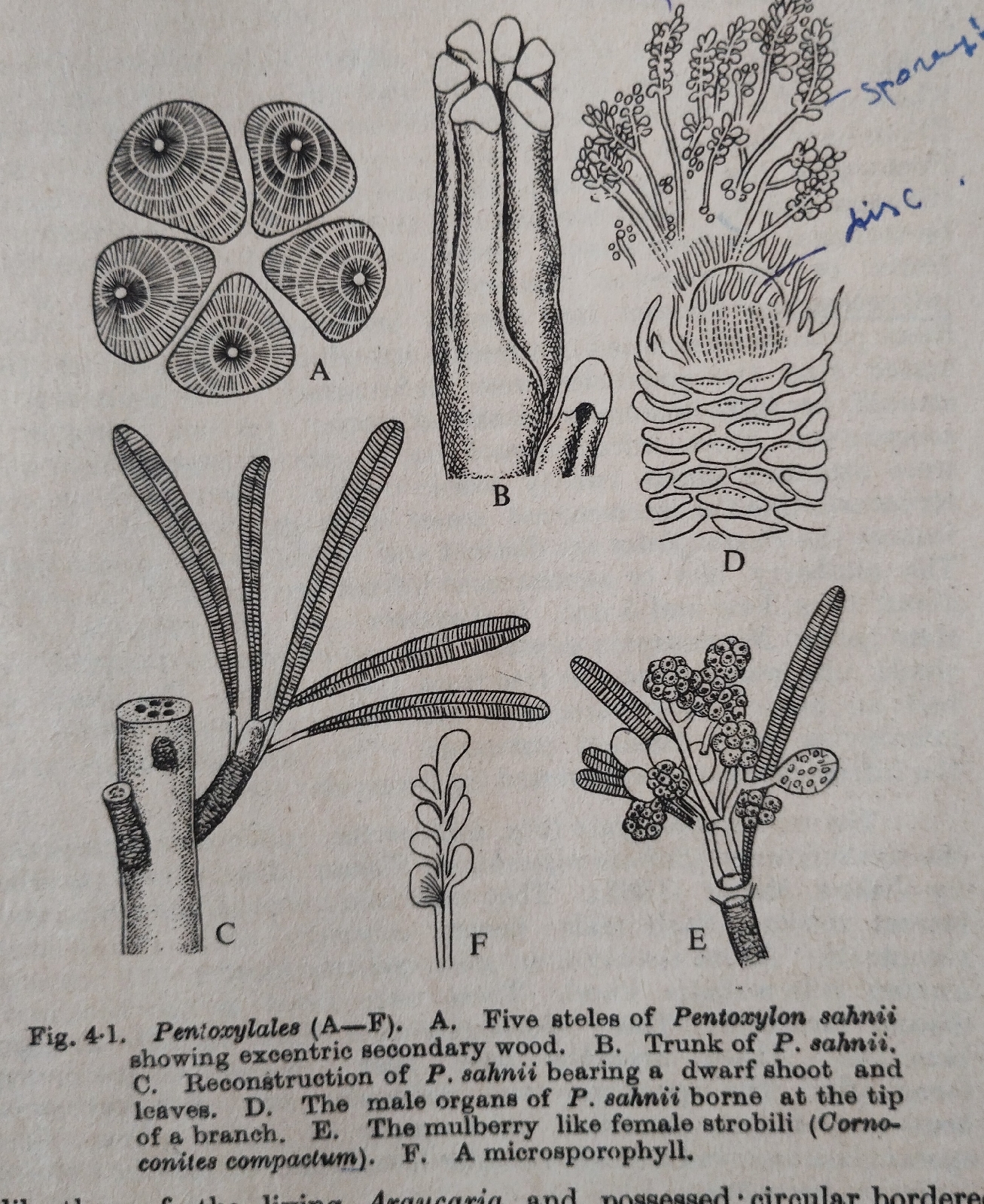Polyporus (For theory and practical )
Kingdom Mycota
Division. Eumycota
Sub-division. Basidiomycotina
Class. Hymenomycetes
Sub-class. Holobasidiomycetodae
Order. Aphyllophorales
Family. Polyporaceae
Genus. Polyporus
Common name : Bracket Fungi ,because the outer margin of the basidiocarp looks like first brackets or Pore fungi , because on the under-surface of the fruit body / basidiocarp many fine pores are present.
Indian species : India represents 159 species of Polyporus like P. betulinus , P. agariceus ,P. circinatus , P.gilvus , P.cubensis , etc .
Economic importance
The harmful members:
(i) P. sulphureus / Sulphur mushroom causes heart rot of oak .
(ii) P. betulinus /Birch Polyporus causes heart rot of birch.
(iii) P. abietinus causes decay of Abies sp.
(iv) P. cinnabarinus causes decay of oak branches .
(v) P.squamosus causes heart rot of elm & sycamore.
(vi) P. glomerata causes wood decay of red maple .
(vii) P. versicolor is a wood rotter .
The useful members :
(i) Young fruit body of P. frondosus ,P. umbellatus ,P. leucomela , P. sulphureus and sclerotia of P. mylittae/ black fellow's bread are edible .
(ii) Reddish-brown basidiocarp of P. lucidus is used in decoration .
Vegetative structure :
(i) Body is mycelial .Hyphae are slender , branched and septate .
(ii) Primary monokaryotic hyphae developed from basidiospore is short lived and soon diplodised to perrenial fruit body of secondary dikaryotic mycelia .
(iii) Clamp connection is formed at the septa of secondary mycelium.
Asexual reproduction:
It is rare and occasionally conidia fromed on dikaryotic mycelium or on curious sterile fruit body germinate into dikaryotic mycelium.
Sexual reproduction:
It is somatogamous and heterothallic . Two somatic hyphae of + & - strain respectively diplodised into secondary dikaryotic mycelium.At favourable time this perrenial mycelium gives fruit body.
Development of fruit body :
At first tender fruit body is a sherical hyphal knot like structure.It gradually developed into a young knot with cap-like pileus with or without a short stipe.When young it is soft , pliable and covered by downy layer of mycelium but at maturity it is hard ,leathery or corky with many pores on under-surface .
Structure of mature basidiocarp:
On maturity fruit body turns hard, leathery /corky.A pileus may or may not be stipitate. If stipitate ,then it may be centric, lateral or dorsal .A few variations are :
P. adustus..........sessile
P. borealis..........sessile
P. anceps...........effused reflexed
P. squosus........sub-sessile
P. brumalis.......stipitate
Upper surface is flat,slightly undulating or smooth.Lower surface is smooth ,flat and porous .
Anatomy:
There are three types hyphae to constitute the fruit body :
(a) Generative hyphae : Thin walled , dense cytoplasmic ,branched with or without clamp connection .
(b) Binding hyphae : Thick-walled , narrow & much branched .
(c) Skeletal hyphae : Thick walled , narrow , unbranched & actually these are the lateral branches of generative hyphae .
On the basis of hyphal composition fruit body are of three types :
(i)Monomitic : Made up of only generative hyphae ,e.g.P.adustus
(ii) Dimitic : Made of generative hyphae along with either binding or skeletal hyphae , e.g. P.sulphureus .
(iii) Made of all three kinds of hyphae .e.g. P.versicolor .
V.S. of basidiocarp :
On v.s. the fruit body consists of the following layers :
(i) Pileus surface : This upper surface is made of a thin layer of thick-walled hyhae .
(ii) Context : Just below the pileus there are anastomosing hyphal zone with large & irregular spaces. It is also called duplex when differentiated into upper soft and lower hard & firm layer .
(iii) Tube layer : Third layer is made of vertical tubes .The connective tissue in between tubes when made of generative & skeletal hyphae , called dissepiment .
(iv) Pore surface : In this porous surface tubes open .
(v) Hymenium : It is the inner fertile layer of pores and composed of club-shaped basidia , sterile paraphyses,cystidia & setae which grow right angles to the length of the tube .Mature basidia bears four sterigmata ending in basidiospore.
Dispersal of spores :
Basidiospores are discharged in the pores & on germination each basidiospore gives rise to monokaryotic primary mycelium on suitable substratum .
For workout:
বহিরাকৃতি: ব্রাকেটের মতো কাষ্ঠল ফলদেহ, অঙ্কতল অনেক ছিদ্রযুক্ত।
গঠন: (১)ফলদেহটিতে একটি ছোট বৃন্ত আছে। এর সাহায্যে ফলদেহ গাছের গুঁড়িতে বা কাঠে সমকোণে যুক্ত থাকে।
(২) ফলদেহ কাষ্ঠল, চামড়া সদৃশ ও পুরু।
(৩) পৃষ্ঠদেশ একের পর এক অর্ধবৃত্তাকার রেখা বিশিষ্ট , ব্রাকেট সদৃশ।
(৪) প্রান্ত ঘেউ খেলানো।
(৫) নিম্নতল অনেক ছিদ্রযুক্ত, এদের ছিদ্রনল বলে।
(৬) ছিদ্রনলের ভেতরে বেসিডিয়াম ও বেসিডিওরেণু তৈরী হয়।
(৭) মাইসেলিয়াম অবস্থানের ভেতরে থাকে, তাই দেখা যায়না।
ফলদেহের গঠণ:
উল্লম্বচ্ছেদে ৪টি সর্বত্র দেখা যায়:
(১) উপরিভাগে হালকা হলুদ বা বাদামি রঙের এককেন্দ্রিক রেখাযুক্ত অঞ্চল পিলিয়াস আছে।
(২) পিলিয়াসের নিচে হালকা রঙের সর্বত্র আছে যার উপরের দিক নরম ও নীচের দিক দৃঢ় । এই স্তরকে কনটেক্সট বলে।
(৩) কনটেক্সটের নিচে খাড়া নালীস্তর আছে।
(৪) নালীর মুখগুলি নিম্নতলে ছিদ্রস্তর গঠন করে।
প্রস্থচ্ছেদ:
(১) ছিদ্রনলগুলির মাঝে হাইফি গঠিত ট্রামা আছে।
(২) ছিদ্রনলের সমকোণে বেসিডিয়া, প্যারাফাইসেস ও অন্যান্য বন্ধ্যা হাইফি নিয়ে হাইমেনিয়াম গঠিত হয়।
(৩) বেসিডিয়ামগুলি ৪টি করে রেণু বহন করে।
সনাক্তকরণের বৈশিষ্ট্য:
(১) কাষ্ঠল, চামড়া সদৃশ,পুরু।
(২) একদিকে ছোটবৃন্ত ও অপরদিকে অর্ধবৃত্তাকার চ্যাপ্টা আকার আছে।
(৩) পৃষ্ঠদেশে অনেকগুলি ব্রাকেটের ন্যায় রেখা আছে।
(৪)নিম্নতল অনেক ছিদ্রযুক্ত।
(৫) প্রস্থচ্ছেদে হাইমেনিয়ামের রেণু, বেসিডিয়া ও প্যারাফাইসেস সুস্পষ্ট।
উপরে বর্ণিত বৈশিষ্ট্যগুলি নির্দেশ করে যে , এই গঠণটি Polyporpus নামক ছত্রাকের ফলদেহ।
Class: Basidiomycetes
Order: Polyporales
Family: Polyporacese
Genus: Polyporous





Comments
Post a Comment